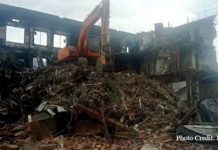
Jan. 26 (UPI) — The Environmental Protection Agency on Thursday eliminated a policy dictating how certain major sources of hazardous air pollutants are regulated.
William Wehrum, head of the EPA’s air office, issued regulatory guidance to repeal the agency’s “once in, always in” policy which states that a “major source” of pollution will always be regulated as such.
Under the new interpretation of the policy, “major sources” can be reclassified as “area sources,” which are subject to different standards, when their emissions reach an enforceable limit.
Wehrum said the policy the EPA followed since 1995 was based on an incorrect interpretation of the Clean Air Act.
“This guidance is based on a plain language reading of the statute that is in line with EPA’s guidance for other provisions of the Clean Air Act,” he said. “It will reduce regulatory burden for industries and the states, while continuing to ensure stringent and effective controls on hazardous air pollutants.”
The EPA said the “once in, always in” policy disincentivized companies from voluntarily reducing pollution by not allowing them to shed their distinction as a major source of pollution.
“Nothing in the structure of the CAA counsels against the plain language reading of the statute to allow major sources to become area sources after an applicable compliance date,” Wehrum wrote.
The Natural Resources Defense Council said the move will allow hundreds of U.S. industrial facilities to dramatically increase their emissions of the “most toxic air pollutants” regulated by the CAA.
“This is among the most dangerous actions that the Trump EPA has taken yet against public health. Rolling back longstanding protections to allow the greatest increase in hazardous air pollutants in our nation’s history is unconscionable,” said NRDC clean air director John Walke.






